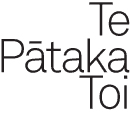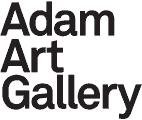Tēnei Ao Tūroa – This Enduring World
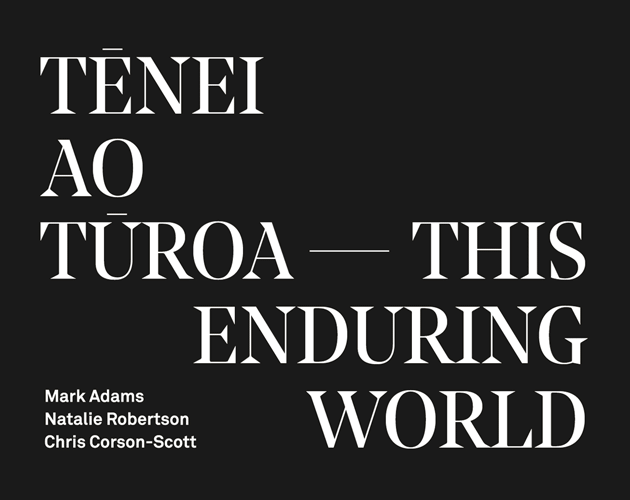
Tēnei Ao Tūroa – This Enduring World
Mark Adams, Natalie Robertson, Chris Corson-Scott
09.04.2022 – 26.06.2022
Te Pātaka Toi Adam Art Gallery’s exhibition featured three distinct bodies of work by three photographic artists: Mark Adams, Natalie Robertson (Ngāti Porou) and Chris Corson-Scott.
They were brought together by Adam Art Gallery Director, Christina Barton, because the three artists share an approach to their medium that links their bodies of work and makes for a gallery installation where threads can be drawn and dialogue enabled that makes visiting a particularly enriching experience.
All three photographers use large-format analogue technology to produce largescale colour and black and white images of great detail and lush tone. All explore particular sites that have loaded histories that speak of human encounter and occupation and their formational and fraught effects. All three approach their role as image makers with deep seriousness, understanding how their practice extends and complicates the history of representations of which they are a part. And in all three historical images find their place both physically and as echoes.
Yet these artists come to their projects from different perspectives. Natalie Robertson uses her camera to connect directly to the whenua of her tīpuna, Adams understands his problematic status as a Pākehā observer, and Corson-Scott calls upon a rich store of colonial representations that function at the level of his pictures’ ‘subconscious.’ Together they offer viewpoints that deepen our understanding of our complex history, and our shared and separate predicaments.
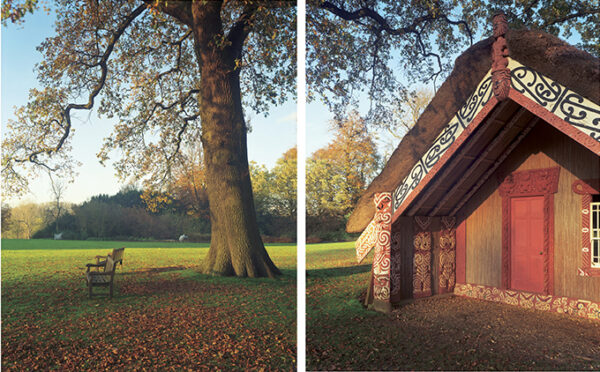
Hinemihi: Te Hokinga – The Return
Mark Adams
Whakairo by Wero Tāroi and Tene Waitere (Ngāti Tarāwhai)
Historical photographs by Robert Henry Bartlett, Burton Brothers, William Collie, Josiah Martin, Arthur James Iles, Elizabeth Pulman, Augustus Hamilton, Hawley & Company, Heslop Brothers, Charles Spencer, George D. Valentine and James Valentine
Curated by Hamish Coney
In 2000 Mark Adams visited Clandon Park in Surrey, England, and photographed Hinemihi o Te Ao Tawhito, the whare whakairo carved in the 1870s by Ngāti Tarāwhai master-carvers Wero Tāroi and Tene Waitere that was installed in the grounds by the late Lord Onslow at the end of the nineteenth century. This assignment was part of an extended project to document the surviving work of Tene Waitere, which is scattered in museums and storehouses on both sides of the world. The entire suite of resulting photographs was presented for the first time at Two Rooms in Auckland in 2020.
This presentation re-staged that exhibition, with the addition of two carvings by Tāroi and Waitere, borrowed for the occasion, and an enlarged selection of historical photographs documenting the carved houses and free-standing sculptures made by these and fellow carvers in their original locations. In Hinemihi’s case, this is Te Wairoa in the Bay of Plenty, the flourishing township that was destroyed in the Tarawera Eruption on 10 June 1886. Selected and arranged by Hamish Coney, who has developed specialist knowledge of the early history of art produced in this region, the show is accompanied by his commentary on the artists that provides the historical context for Adams’ photographs.
In bringing together this exhibition Adam Art Gallery gratefully acknowledges the support of Rotorua Museum Te Whare Taonga o Te Arawa and the Houmaitawhiti Marae Committee, Te Papa Tongarewa Museum of New Zealand, Two Rooms, Auckland, and private lenders to the exhibition.
Hinemihi: Te Hokinga – The Return (PhotoForum/Rim Books, Auckland, 2020), a substantial publication prepared in 2020 by Hamish Coney and several other contributors, is available for sale in the Gallery.
Mark Adams (born 1949, Christchurch, Ka Pakihi Whakatekateka o Waitaha, Canterbury, Te Wai Pounamu. The South Island) is one of New Zealand’s leading photographers. Committed to using a large-format plate camera, he has contributed a substantial body of work that explores his first-hand experience of and response to New Zealand’s cross-cultural and colonial history. He has exhibited his work since 1972 in New Zealand public art galleries, many of which have collected his work. He has also exhibited in public and university galleries and museums in Australia, Canada, the USA, The Netherlands, Germany, and the UK. This has included the 1998 Bienal de São Paulo; Zelda Cheatle Gallery, London; the Maritime Museum, Greenwich; the Royal Academy, London; and Musée du quai Branly, Paris. He has received grants from Queen Elizabeth II Arts Council, MASPAC, Creative New Zealand Toi Aotearoa, The Leverhulme Trust and the Getty Grant Program. He worked at and exhibited with Real Pictures Gallery and photographic laboratory, Auckland, and established Studio La Gonda on Karangahape Road in Auckland with Haru Sameshima in 1996. He continues to work at Studio La Gonda and is represented by McNamara Gallery, Whanganui, and Two Rooms, Auckland.
Hamish Coney is an Auckland-based writer and arts advisor. He has a particular interest in the intersection of cross-cultural thinking in the arts, with a view towards placing Māori art concepts and production at the centre of the broader discourse within New Zealand art history. He has a BA in Art History from the University of Auckland and has built a deep working knowledge of New Zealand art as the founding managing director of the auction house Art + Object (2007–2018). He writes a regular arts column for newsroom.co.nz. and is a trustee of Artspace Aotearoa.
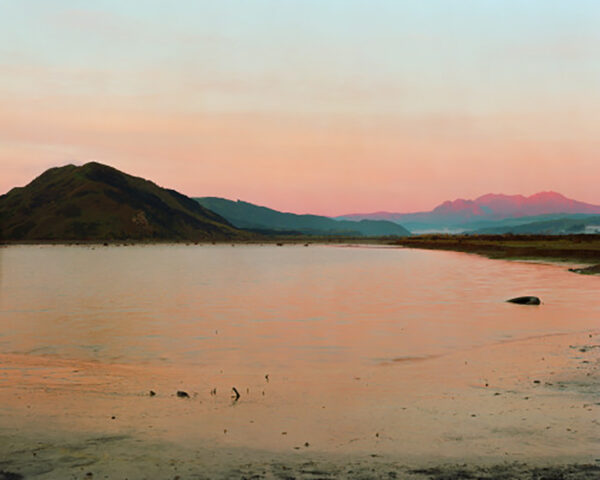
Tātara E Maru Ana – The Sacred Rain Cape of Waiapu
Natalie Robertson
Natalie Robertson first presented Tātara E Maru Ana – The Sacred Rain Cape of Waiapu at Tairāwhiti Museum in Gisborne in November 2020. This is the cultural institution closest to the whenua which is the artist’s subject. It was presented again, in a different configuration, at St Paul St Gallery at Auckland University of Technology in 2021, where it served as one component of the artist’s submission for her PhD, which she has now been awarded by the University of Auckland. Restaged at Adam Art Gallery, the show provided Wellington audiences with the opportunity to experience Robertson’s deeply engaged recording of significant sites around the Waiapu river, which is the awa of her people, Ngāti Porou.
Robertson has offered her services to Te Runanganui o Ngāti Porou iwi and hapū who have embarked on a hundred-year plan, in partnership with the Gisborne District Council and Ministry of Primary Industries, to revitalise the river. Called Waiapu Kōkā Hūhua, this project is a response to the century-long catastrophic environmental disaster facing the river and the region due to deforestation and mass erosion. Her project is to provide a lasting record, so that people in the future can track the changes from this date, just as her exhibition includes earlier images that show what the river looked like in previous times. Robertson bases her research in Te Tai Rāwhiti, her East Coast Ngāti Porou homelands to explore how her lens-based practice can contribute to tribal aspirations for environmental reinvigoration and as a conscious advancement of Maori counter-narratives to settler colonialism.
Natalie Robertson (born 1962, Kawerau, Ngāti Porou Clann Dhònnchaidh) is a photographer, moving-image artist, writer and Senior Lecturer at Auckland University of Technology (AUT), Tāmaki Makaurau Auckland. She has exhibited extensively in New Zealand and internationally. Recent exhibitions include Toi Tū Toi Ora: Contemporary Māori Art at Auckland Art Gallery, 2020 –21; 15th Annual Nuit Blanche Toronto, 2020; and To Make /Wrong/ Right/ Now Honolulu Biennial, 2019. Robertson contributed to the multi-authored book Hei Taonga Mā Uri Whakatipu – Treasures for the Rising Generation: The Dominion Museum Ethnological Expeditions 1919–1923 published by Te Papa Press in 2021. She also photographed extensively for the multi-award-winning book A Whakapapa of Tradition: One Hundred Years of Ngāti Porou Carving, 1830–1930, by Ngarino Ellis (2016), which won The Judith Binney Best First Book Award for Illustrated Non-Fiction in the 2017 Ockham New Zealand Book Awards. Her 2012 essay “Can I take a photo of the marae?” – Dynamics of Photography in Te Ao Maori (the Maori World) received widespread international distribution in The Rural: Documents of Contemporary Art published by Whitechapel Gallery and MIT Press (2019), establishing her significant contribution to the scholarship of Māori and photography.
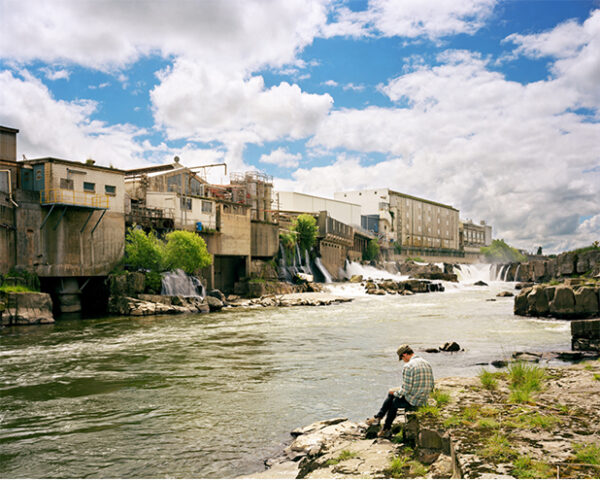
Landscape photographs
2013–2018
Chris Corson-Scott
with historical works by John Kinder and Alfred Sharpe
Curated by Christina Barton
This was Chris Corson-Scott’s first solo project in a public institution in Wellington. His photographs represent the continuing power of analogue photography and large-scale, high-resolution digital printing in a world awash with images. In his approach to his medium, and in the subjects he chooses to depict, Corson-Scott brings an equally critical sensibility to his photographer colleagues. Among his various subjects, he has a particular fascination for the vestiges of industry that were a feature of the exploitation and transformation of New Zealand’s natural environment in the late nineteenth and early twentieth centuries. Travelling to remote locations or on urban fringes, guided by prior research, local knowledge, and GPS tracking, he has found and documented the remains of gold diggings, coal mining, timber milling, quarrying and mineral extraction, capturing freezing works and flourmills, kilns and creeping subdivisions. Rather than a project about the past, however, Corson-Scott is concerned with sustainability in our present day: his vestiges are premonitions as much as ruins. Corson-Scott appears driven to document the crumbling remains of our colonial and early modern past, to indicate that the economic drivers that first led Europeans to venture to the South Pacific are still in play. He shows us the detrimental impact of their avaricious industries on our environment and warns us that life is fragile and all things pass.
For this presentation of Corson-Scott’s landscape photographs, we borrowed indicative examples of works by colonial artists John Kinder (1819–1913) and Alfred Sharpe (1836–1908) to illustrate the artistic lineage within which Corson-Scott is working. We are grateful to the Alexander Turnbull Library at the National Library of New Zealand Te Puna Mātauranga Aotearoa and the Hocken Library Uare Taoka o Hākena at the University of Otago for their support of this exhibition.
Chris Corson-Scott (born 1985) lives and works in Auckland, New Zealand. Son of the painter Ian Scott (1945–2013), he grew up in a household where art was made, seen and discussed. He attended music school rather than art school, but he has a deep knowledge of art history and has immersed himself in the theory and practice of photography. He has brought his photographs together in publications – Dreaming in the Anthropocene (Compound Press, Auckland, 2017) and Evanescent Monuments (Compound Press, Auckland, 2018) – and in solo exhibitions at Trish Clark Gallery in Auckland; Parlour Projects, Napier, and Photospace in Wellington. His photographs have been included in group exhibitions including Kinder’s Presence (Auckland Art Gallery Toi o Tāmaki, 2013); My Place (Four New Zealand Photographers) (Pingyao International Photography Festival, Shanxi, China, 2013); The Devil’s Blind Spot: Recent Strategies in New Zealand Art Photography (Christchurch Art Gallery Te Puna o Waiwhetū, 2016); The Future Machine (Tauranga Art Gallery, 2017) and Civilization: Photography Now (Auckland Art Gallery, 2020). His works are in private and public collections including the Chartwell Collection at Auckland Art Gallery Toi o Tāmaki and Christchurch Art Gallery Te Puna o Waiwhetū. He is represented by Trish Clark Gallery, Auckland.
The public programme associated with these projects is available as a pdf, or can be viewed on our calendar page.
Media release pdf: New exhibition at Te Pātaka Toi Adam Art Gallery speaks to the charged history, fateful consequences, and future prospects of our bicultural nation, 6 April 2022
In the media: Mark Amery, ‘Photography as a Tardis in capital’, Dominion Post and stuff.co.nz, 30 April, 2022
